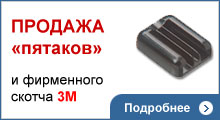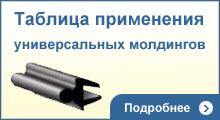| АВТОСТЕКЛА: продажа автостекол, доставка и установка автостекол в Москве |
в мире автостекол
| Email для связи: |
НОВЫЕ ПОСТУПЛЕНИЯ Пластиковый скребок с ручкой для удаления наледи на автостекле 
240 руб.
СПЕЦ. ПРЕДЛОЖЕНИЕ Стекло опускное левой задней двери для Daewoo Kalos sedan 02 г. 
1 200 руб.
А ЗНАЕТЕ ЛИ ВЫ, ЧТО... Пленка PVB фирмы DuPont начала применяться в автомобильных стеклах с 1938 года.
|
Audi S4 20112011 Audi S4. Vehicle type: Four-door sedan NAGS numbers*:Windshield part numbers FW2946 solar, pre-applied adhesive system; FW2947 solar, PAAS, rain sensor; FW2948 solar, PAAS, rain sensor, lane departure system. Helpful tools or supplies: Thin cold-knife blades to cut out the top and sides of the windshield, and a rain sensor gel pack. Watch for: The interior garnish moldings are covered with fabric. Do not use a long cold-knife blade to cut out the windshield as it could snag these moldings. Also note, the new glass is not the PAAS type we are used to. It comes with an underside molding on the top and a molding retainer on the bottom. The bead of new urethane will actually touch the glass on both the top and bottom without bonding to a PAAS. *With permission from National Auto Glass Specifications. Call NAGS at 800/551-4012 or visit http://glass.mitchell.com/. A. Windshield Preparation 1. Cover the front seats, floorboards, dash and steering wheel with a clean drop cloth or disposable plastic covers. Note: Always wear eye and hand protection when working with glass. Make sure you have the right glass and moldings and that the urethane systems you are about to use are current. Windshield part numbers are FW2946, FW2947 and FW2948. 2. Drape the fender with a fender cover and tape up any vulnerable areas on the vehicle to protect against possible damage. Tape up the defroster vents to prevent debris from falling into the openings. 3. The rearview mirror, rain sensor and wiring are shielded by a decorative two-piece cover. Remove both pieces of the cover at the same time, and separate after removing from the windshield. 4. To remove the rearview mirror and rain sensor:
5. Remove the windshield-wiper nut covers. 6. Remove the windshield-wiper nuts using a 14-millimeter wrench or socket. 7. Use your fingers to remove the side molding by pulling upward and releasing the molding from the retainer riveted on the A-pillar wall. This requires minimal effort. 8. To remove the two-part cowl panel, first remove the two corner cowl retainers from the front cowl panel. Using a flat screwdriver, make a quarter turn to release the retainers. Then, lift and slide out from under the back cowl panel. Set in a safe place. 9. Remove the back cowl panel by removing the three spring steel clips from the leading edge of the cowl that attach the back cowl to the firewall. 10. Starting in the corners, gently pry up the back cowl panel from the retainer attached to the lower edge of the glass part. Continue along the bottom until the back cowl is free from the retainer. Set in a safe place. Note: Before beginning windshield removal, verify the new windshield is the correct one, and the urethanes and primers are current. Never use outdated products as this could jeopardize the structural integrity of the vehicle and the safety of its passengers. Removal 11. Before cutting out the windshield, remove contaminants from the glass and pinchweld to prevent contact with the urethane. 12. Use a thin-blade cold knife or a cold knife with a padded vertical leg to remove the glass from the adhesive bead on the top and sides. Use the tool of your choice to cut along the bottom. If you use a power tool, lubricate the cutting area with water. There are no gravity stops on this vehicle; use a temporary stop to keep the glass from sliding off the fresh urethane. 13. Take the windshield out of the opening using a set of vacuum cups. Make sure the vacuum cups do not overlap a crack in the glass. Lift the glass and place it on a windshield stand or suitable workstation. Installation 15. After cutting the windshield out, remove contaminants such as dirt, moisture and debris from the pinchweld. Clean the dashboard. 16. Dry fit the new glass to the opening. Mark your glass using a grease pencil or retention molding tape. 17. Place your vacuum cups on the new windshield in the appropriate location. 18. Set the windshield onto the old urethane. 19. With the windshield resting in the opening, make sure it is in the right spot. 20. Adjust both sides to the correct setting, marking the passenger side, then the driver side. Lift the glass and place it on a windshield stand or suitable workstation. 21. Follow the urethane manufacturer’s recommendations for installation. 22. Clean the inside of the windshield using a urethane manufacturer-recommended product. Do not touch the bonding area of the windshield after cleaning, prepping or priming it. 23. Re-attach the wire cover back retainer to the new glass. 24. Mount the rain sensor lens before setting the glass in the opening. To do so:
25. Wear powder-free Nitrile gloves to protect against harsh chemicals. 26. Apply the glass prep and primer following the urethane manufacturer’s recommendations. 27. Using the tool of your choice, remove the original urethane bead, leaving 1 mm-2 mm of existing urethane on the pinchweld. Make sure there are no contaminants and do not touch the pinchweld after prepping the area. 28. Apply the pinchweld primer only to the areas where needed, and follow the urethane manufacturer’s recommendations. Allow preps and primers to dry as recommended by the urethane manufacturer. 29. Apply a triangular bead of urethane to the same path as the freshly cut urethane on the pinchweld. Before cutting your V-notch, cut the tip off of your nozzle with a nozzle-cutter. With the cut nozzle, measure to the top of the roofline, and at 1/16-inch higher than the roofline, make a mark on the nozzle with a pen or marker. Notch the nozzle up to the marked line; this will give you the appropriate triangular bead. 30. Lift the windshield from the windshield stand or workstation using vacuum cups. Set the windshield on the urethane at the mark you made during your dry fit. Lower the driver’s side of the windshield onto the urethane and line it up with the dry-fit mark; it is now in place. 31. The windshield is now ready to be decked. Press firmly to ensure a good seal. 32. Before re-installing the parts, check for leaks. Use a leak detector to go over the perimeter of the windshield. If you find a leak, apply more pressure or add more urethane to the spot and ensure that the glass makes contact with the wet urethane. 33. Re-install the cowl panels, wipers and side moldings. 34. Separate the wire cover from the mirror assembly and attach the mirror assembly to the mirror bracket with a one-quarter turn. Reconnect the two wiring connectors and covers. 35. Check operation of the rain sensor and wipers. 36. Allow the urethane to cure according to the urethane manufacturer’s recommended cure time before returning the vehicle to the customer. Warning: Disregarding the safe drive-away time that your urethane manufacturer recommends could jeopardize the structural integrity of the vehicle and the safety of its passengers. 37. You have completed the removal and replacement of the windshield. By Bob Beranek |






